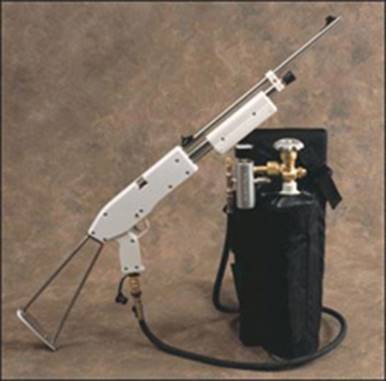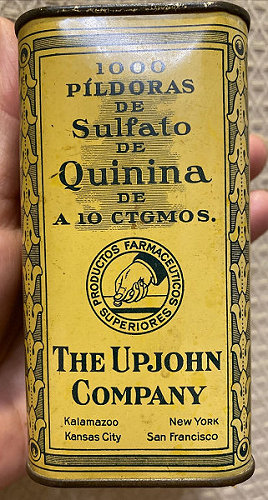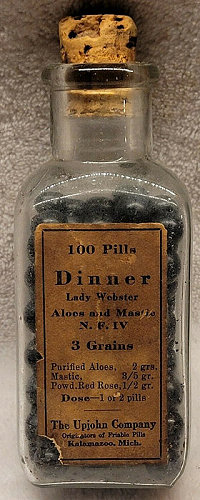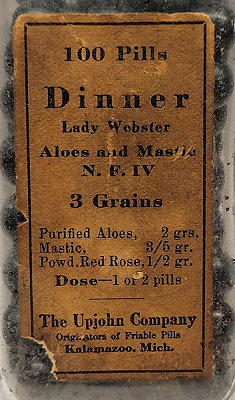|
These nuggets of Upjohn history were distributed via Larry Reeves to everyone on the Pfizer Kalamazoo manufacturing site QTS broadcast emails as "Jeremy's Corner" starting in 2019. Thank you, Larry! |
|
Corner #33 - One of the most unusual Upjohm research projects used Ballistivet, a system developed to shoot antibiotics into cattle and hogs using an air rifle. The advantages were said to be: treatment can be given earlier, less or no stress on the animal, less or no stress on person treating the animal, significant reduction in time taken to treat animal, greater worker safety and less potential for injury liability. Upjohn created a polymeric matrix of the antibiotic ceftiofur in the shape of a bullet. It was termed a "biobullet" and contained 100mg of ceftiofur. This biobullet was to be fired via the air rifle into cattle to treat them for pneumonia, foot rot and pink eye. Thankfully, the product didnít get very far in development, mostly because of ethical concerns. I have a page with more information on Ballistivet |

|
Corner #32 - This is a Spanish language tin containing 1000 pills of 1/10 grain quinine sulfate. Quinine was used to treat malaria, which used to be a big problem all over the world, including Michigan. A grain was the unit of quantity for ingredients before the mg took over. The Upjohn Company made this product between 1902 and 1919 so the tin is over a hundred years old. Quinine pills were very small so 1000 could be fitted inside it. Back in this era, Upjohn was known as the Quinine Company because nearly 50% of its sales were quinine products. These tins were filled in the Upjohn Downtown Kalamazoo manufacturing complex. I don't know whether the Spanish language market at that time was Puerto Rico, Mexico or parts of the US. Upjohn didn't have an international operation at the time. Quinine is no longer the first choice to treat malaria but is used to treat cases that resist the newer drugs for it. |

|
Corner #31 - Dinner Pills were claimed to cure constipation, billiousness, dyspepsia, sick headache, loss of appetite, torpid liver and indigestion. You took them at dinner. The Upjohn Company produced them in their Downtown Kalamazoo manufacturing operations and sold them from 1886 to 1919. The example below has a lot number on the bottom right of the label so it was made after 1910. The "Lady Webster" signified a generic formulation that was used by many companies in the nineteenth and early twentieth centuries. On the list of ingredients, Aloes does have some anti-inflammatory and laxative effects. Mastich is said to delay the absorption of the aloes so its action occurs in the large bowel. Aloes, Mastic and Red Rose were all extracted from plants, as every pharmaceutical substance was during that era. Apparently this product did give people some relief since it was sold for 23 years. Having a torpid liver sounds pretty awful. |

